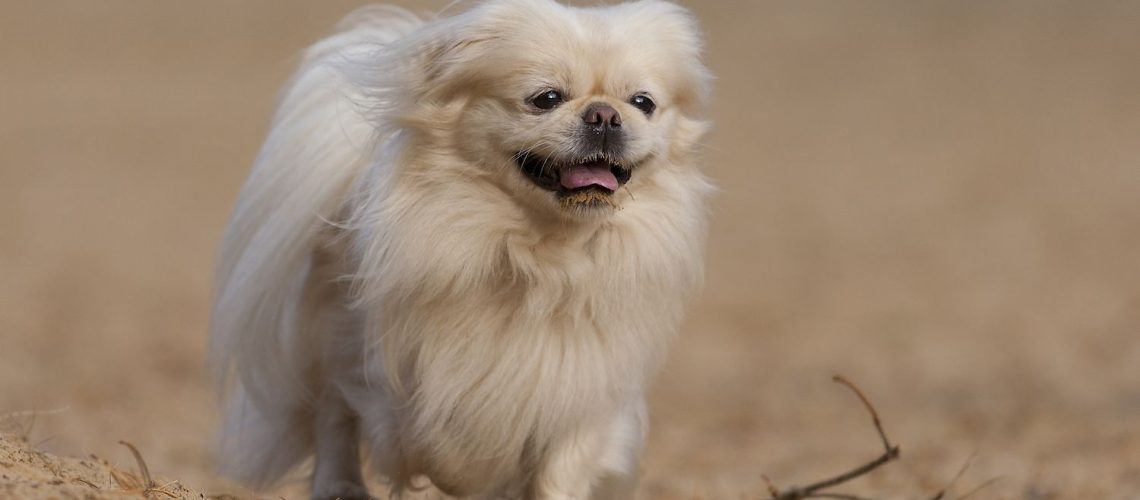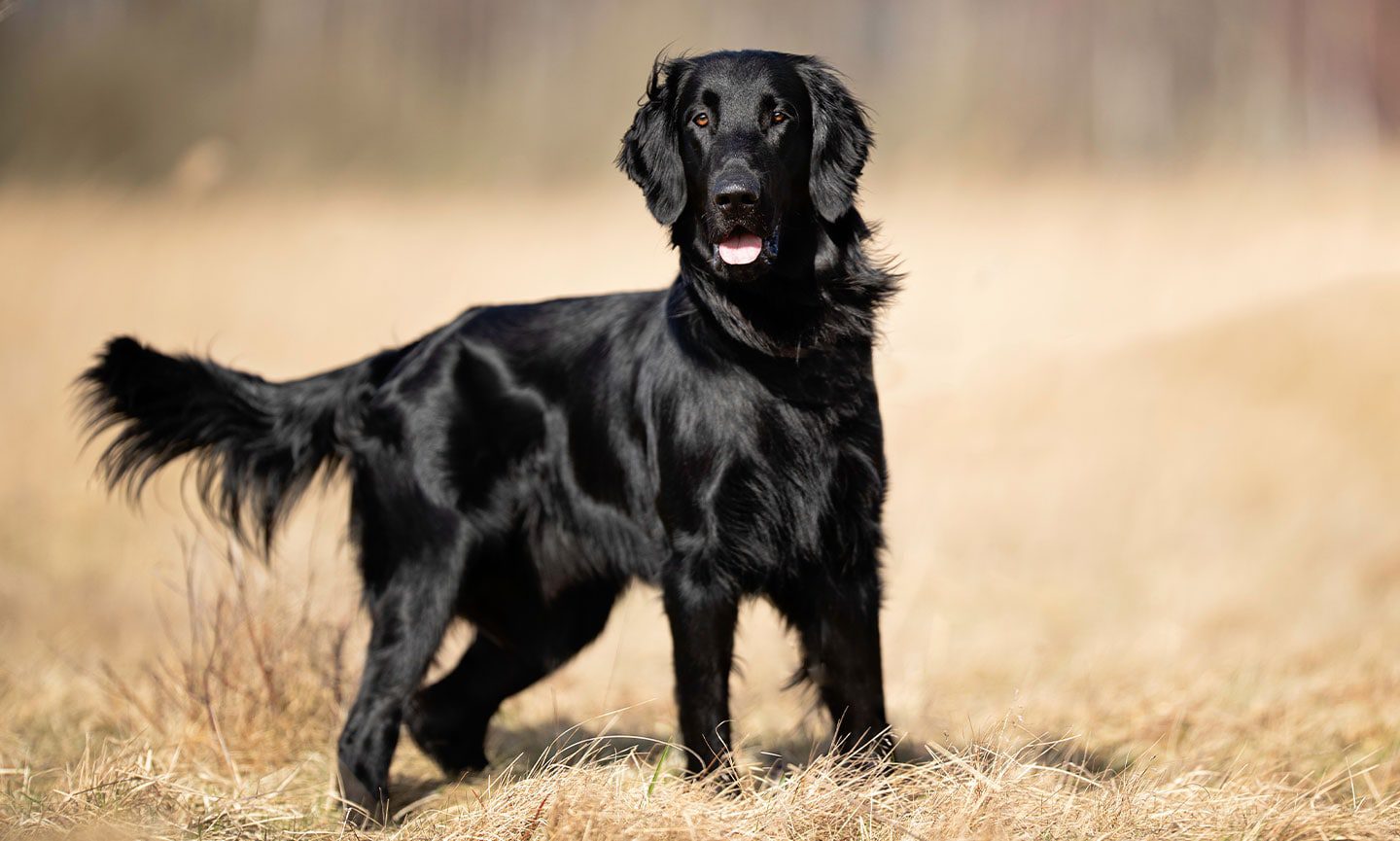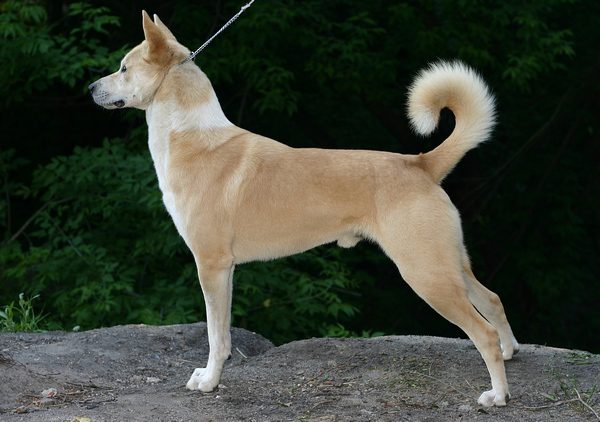Key Takeaways:
- Pekingeses are small dogs with a distinctive flat face and long, flowing coat.
- They are known for their loyal and affectionate nature, making them great companions.
- Pekingeses require regular grooming and maintenance to keep their coat healthy and prevent matting.
- Due to their brachycephalic (short-muzzled) structure, Pekingeses can be prone to respiratory issues and overheating.
- Training and socialization from an early age are important for Pekingeses to prevent behavioral problems and ensure they are well-behaved pets.
Are you a dog lover looking to expand your knowledge of different dog breeds? If so, you're in luck! Today, we'll be exploring the fascinating world of Pekingese dogs, also known as Peke. These adorable and unique creatures have a rich history and distinctive characteristics that make them stand out from other breeds. By delving into this subject, you'll gain valuable insights into the care and traits of Pekingese dogs, allowing you to better understand and appreciate these lovable companions. Whether you're considering getting a Peke or simply curious about their quirks, this exploration will provide you with all the information you need. So get ready to embark on an exciting journey into the world of Pekingese dogs - it's time to discover what makes them truly special!
Unique Characteristics of the Pekingese Dog Breed
The Pekingese is a small dog breed that originated in China. They are known for their distinctive appearance, which includes a flat face, large eyes, and a mane-like coat. Pekingese dogs have a compact and sturdy build, with a broad chest and short legs. Their tails curl over their backs, adding to their regal and dignified appearance.
One unique characteristic of the Pekingese breed is their independent and confident nature. Despite their small size, they have a strong personality and are not easily intimidated. They are known to be loyal and protective of their families, making them excellent watchdogs.
The Appearance of a Pekingese: A Description
A Pekingese dog has a distinct appearance that sets it apart from other breeds. They have a round head with wide-set eyes that give them an alert expression. Their ears are heart-shaped and sit high on their head. The most notable feature of the Pekingese is its luxurious double coat, which can come in various colors including gold, red, black, or white.
Despite their small size, Pekingese dogs have a sturdy build with muscular legs that allow them to move with grace and agility. They have a straight back and carry themselves proudly. Their tail is plumed and carried over the back, adding to their elegant appearance.
The Temperament of Pekingese Dogs: What to Expect
Pekingese dogs have a unique temperament that combines independence with loyalty towards their owners. They can be quite stubborn at times but also show great affection towards their family members. While they may be reserved around strangers, they form strong bonds with those they trust.
This breed tends to be protective of its territory and can be wary of unfamiliar dogs or animals. However, with proper socialization from an early age, they can learn to get along well with other pets. Pekingese dogs are generally not recommended for families with young children, as they prefer a calmer environment.
Exercise Needs for a Pekingese: How Much is Enough?
Pekingese dogs have moderate exercise needs and do well with short daily walks or play sessions. Due to their small size and short legs, they don't require extensive exercise like some larger breeds. However, it's important to keep them active to prevent obesity and promote overall health.
In addition to physical exercise, mental stimulation is also essential for the Pekingese breed. They enjoy interactive toys and puzzle games that challenge their intelligence. It's important to note that Pekingese dogs are brachycephalic, which means they have a shortened muzzle. This can make them more prone to heat exhaustion, so it's important to avoid excessive exercise in hot weather.
Common Health Issues in Pekingese Dogs: What to Watch For
While Pekingese dogs are generally healthy, there are some common health issues associated with the breed that owners should be aware of. One of the most common issues is respiratory problems due to their flat faces. They may snore or have difficulty breathing at times.
Pekingese dogs are also prone to eye problems such as corneal ulcers or dry eye syndrome. Regular veterinary check-ups and proper eye care can help prevent these issues from becoming serious. Other health concerns include dental problems and skin allergies.
Grooming and Care for a Pekingese's Coat: Tips and Advice
The luxurious coat of a Pekingese requires regular grooming to keep it looking its best. Daily brushing is necessary to prevent matting and tangles. Pay special attention to the feathering on their ears, legs, and tail, as these areas are more prone to tangling.
Bathing should be done occasionally using a mild dog shampoo to keep their coat clean and healthy. It's important to dry them thoroughly after bathing to prevent skin irritation. Regular nail trims, teeth brushing, and ear cleaning are also essential parts of Pekingese grooming.
Tips for Training and Socializing a Pekingese Puppy: A Guide
Training a Pekingese puppy requires patience and consistency. They can be stubborn at times, so positive reinforcement methods work best. Use treats and praise to reward good behavior and avoid harsh punishment.
Early socialization is crucial for a Pekingese puppy to develop into a well-rounded adult. Expose them to various people, animals, and environments from an early age. This helps them become more comfortable in different situations and reduces the likelihood of fear or aggression towards strangers or other animals.
Unique Characteristics of the Pekingese Dog Breed
The Pekingese dog breed is known for its unique characteristics that set it apart from other breeds. One distinctive feature is its flat face and pushed-in nose, which gives it a cute and adorable appearance. Their large, round eyes are another defining trait, often described as expressive and full of personality. Additionally, Pekingese dogs have a long, flowing double coat that requires regular grooming to keep it looking its best.
Compact Size
Pekingese dogs are small in size, typically weighing between 7 to 14 pounds. Despite their small stature, they have a sturdy build with a well-balanced body. Their compact size makes them suitable for apartment living or homes with limited space.
Ancient Origins
Originating from China, the Pekingese breed has a rich history dating back over 2,000 years. They were initially bred to be companions for Chinese royalty and were highly regarded as sacred animals. Their regal heritage can still be seen in their dignified demeanor and confident posture.
Lion-Like Appearance
One of the most fascinating aspects of the Pekingese breed is their resemblance to lions. With their abundant mane-like coat around the neck and shoulders, they exude an aura of majesty. This lion-like appearance is further enhanced by their proud stance and deliberate movements.
Overall, the unique characteristics of the Pekingese dog breed make them stand out among other breeds. From their compact size to their ancient origins and lion-like appearance, these dogs possess an undeniable charm that captivates all who encounter them.
The Appearance of a Pekingese: A Description
When it comes to describing the appearance of a Pekingese dog, several key features come to mind. These features contribute to their overall adorable and distinctive look, making them easily recognizable.
Flat Face and Pushed-In Nose
One of the most prominent features of a Pekingese is its flat face and pushed-in nose. This characteristic gives them a unique facial structure that sets them apart from other breeds. Their short muzzle and wrinkled forehead add to their charm, creating an endearing expression that melts hearts.
Large, Round Eyes
The large, round eyes of a Pekingese are another defining feature. They are set wide apart and have a warm, expressive gaze that can convey a range of emotions. These captivating eyes are often described as soulful and give the breed an irresistible appeal.
Abundant Double Coat
The Pekingese's coat is another notable aspect of their appearance. They have a long, flowing double coat that consists of a soft undercoat and a longer outer coat. This luxurious fur requires regular grooming to prevent matting and keep it looking its best. The coat comes in various colors, including black, fawn, cream, and white.
In summary, the appearance of a Pekingese dog is characterized by its flat face with a pushed-in nose, large round eyes, and abundant double coat. These features combine to create an irresistibly cute and distinctive look that is instantly recognizable as this beloved breed.
The Temperament of Pekingese Dogs: What to Expect
Pekingese dogs have a distinct temperament that sets them apart from other breeds. Understanding their temperament can help potential owners know what to expect when bringing one into their home.
Loyal and Affectionate
Pekingese dogs are known for their unwavering loyalty towards their owners. They form strong bonds with their family members and thrive on companionship. Despite their small size, they have big hearts filled with love and affection. Pekingese dogs enjoy being close to their loved ones and often seek out physical contact, whether it's sitting on laps or snuggling up next to their owners.
Independent and Strong-Willed
While Pekingese dogs are loving and loyal, they also possess an independent nature. They have a strong sense of self and can be quite stubborn at times. This independence stems from their history as royal companions who were treated with great respect. It is important for owners to establish themselves as the pack leader through consistent training and boundaries.
Alert and Protective
Pekingese dogs have a keen sense of alertness and make excellent watchdogs. Despite their small size, they are not afraid to sound the alarm when they perceive a potential threat. Their protective nature extends to their family members, making them fiercely loyal guardians.
In conclusion, the temperament of Pekingese dogs is characterized by loyalty, affection, independence, and protectiveness. Understanding these traits can help potential owners provide the right environment and training for these wonderful companions.
Exercise Needs for a Pekingese: How Much is Enough?
Understanding the Exercise Requirements
Pekingese dogs may be small in size, but they still require regular exercise to maintain their overall health and well-being. As a proud owner of a Pekingese, it's important to understand their exercise needs. These adorable creatures have moderate exercise requirements compared to larger breeds. They enjoy short walks and play sessions, but excessive physical activity can strain their respiratory system due to their flat faces. It's crucial to strike a balance between providing enough exercise and not overexerting them.
Tips for Exercising Your Pekingese
1. Short Walks: Take your Pekingese for short walks around the neighborhood or in a nearby park. Aim for two 15-minute walks per day.
2. Indoor Playtime: Engage your Pekingese in indoor activities like playing with toys or teaching them simple tricks. This helps stimulate their mind and keeps them active.
3. Avoid Extreme Temperatures: Due to their brachycephalic (short-nosed) structure, Pekingese are sensitive to extreme temperatures. During hot weather, opt for early morning or late evening walks when it's cooler.
Remember, each dog is unique, so adjust the exercise routine based on your Pekingese's age, health condition, and energy levels.
Common Health Issues in Pekingese Dogs: What to Watch For
Potential Health Concerns
While Pekingese dogs are generally healthy, there are certain health issues that they may be prone to. Being aware of these common ailments can help you detect any potential problems early on and seek appropriate veterinary care.
Brachycephalic Airway Syndrome
One common health issue in Pekingese dogs is Brachycephalic Airway Syndrome. Due to their flat faces, they can experience difficulty breathing, especially in hot or humid weather. Symptoms may include snorting, wheezing, and excessive panting. If you notice any of these signs, it's important to provide a cool and well-ventilated environment for your Pekingese and consult a veterinarian.
Eye Problems
Pekingese dogs are also prone to various eye problems such as corneal ulcers, dry eye, and progressive retinal atrophy (PRA). Regularly check your dog's eyes for any redness, discharge, or cloudiness. If you observe any abnormalities, seek prompt veterinary attention to prevent further complications.
Remember to schedule regular check-ups with your veterinarian and maintain a healthy diet and exercise routine to minimize the risk of these health issues.
Grooming and Care for a Pekingese's Coat: Tips and Advice
Maintaining the Beautiful Coat
The luxurious double coat of a Pekingese requires regular grooming to keep it healthy and tangle-free. Here are some tips to help you care for your Pekingese's coat:
Brushing:
Regular brushing is essential to prevent matting and remove loose hair from the coat. Use a soft-bristle brush or comb designed for long-haired breeds like the Pekingese. Aim for at least three times a week brushing session.
Bathing:
Bathe your Pekingese every 2-3 weeks using a mild dog shampoo. Be cautious not to wet their face excessively as it can lead to skin fold infections. After bathing, thoroughly dry their coat with a towel or low-heat blow dryer.
Eye Cleaning:
Due to their prominent eyes, Pekingese are prone to tear staining. Gently clean their eyes daily using a damp cloth or specialized eye wipes to prevent tear stains from forming.
Nail Trimming:
Regularly trim your Pekingese's nails to maintain their paw health. Be cautious not to cut too close to the quick, which can cause bleeding. If you're unsure, consult a professional groomer or veterinarian.
By following these grooming tips and establishing a regular routine, you'll help keep your Pekingese's coat healthy, shiny, and free from tangles.
Tips for Training and Socializing a Pekingese Puppy: A Guide
Training Your Pekingese Puppy
Training and socializing your Pekingese puppy is crucial for their development into well-behaved and confident adults. Here are some tips to guide you:
Start Early:
Begin training your Pekingese puppy as soon as you bring them home. Early socialization helps them become comfortable with various people, animals, and environments.
Positive Reinforcement:
Use positive reinforcement techniques such as treats, praise, and rewards to motivate your Pekingese during training sessions. They respond well to gentle encouragement rather than harsh discipline.
Potty Training:
Establish a consistent potty training routine by taking your puppy outside frequently, especially after meals or naps. Reward them when they eliminate in the designated area to reinforce good behavior.
Socialization:
Expose your Pekingese puppy to different sights, sounds, and experiences gradually. Introduce them to other friendly dogs and people of all ages to ensure they grow up being comfortable in various social situations.
Remember that patience and consistency are key when training your Pekingese puppy. Seek professional guidance if needed and enjoy the journey of watching your adorable companion grow into a well-rounded dog.
In conclusion, Pekingese dogs are small and affectionate pets that require regular grooming and attention. With proper care and love, they can make wonderful companions for families or individuals looking for a loyal and low-maintenance pet.
Are Pekingese high maintenance dogs?
Not surprisingly, Pekingese dogs require a lot of maintenance and, like many breeds that have been bred for a long time, they can have inherited health problems. In the case of Pekingese, these issues may include eye or heart problems, as well as difficulty breathing because of their flat faces.
Is a Pekingese a good family dog?
Pekingese dogs have been specifically bred to be companions since ancient times in China. As a result, they make excellent pets for families and tend to form strong bonds with a certain group of individuals. While they are affectionate, they can also be quite stubborn.
Do Pekingese get attached to one person?
The Pekingese breed is known for being charming, affectionate, and incredibly loyal. These dogs tend to form strong bonds with one person and consider them their favorite. If you are that person, you can consider yourself fortunate because you will receive constant cuddles and enthusiastic greetings when you come home.
Are Pekingese hard to take care of?
Taking care of a Pekingese is not very challenging as they have moderate grooming requirements. It is recommended to brush your pet for at least one hour per week to prevent their thick coat from getting tangled and to remove any dead hair. During shedding season, you might consider brushing more frequently as Pekingese dogs shed a moderate amount.
Are Pekingese hard to housebreak?
Due to the challenging nature of training this specific breed, it is important to have a great deal of patience and consistently stick to a training routine in order to achieve success. Just like with any other training, repetition, positive reinforcement, and time are key factors in achieving desired results.
Are Pekingese good for seniors?
Due to their preference for a calm environment and dislike of rough play, this breed is considered ideal for older individuals who are more likely to live in a peaceful setting rather than a household with energetic children. The Pekingese is known for their unwavering loyalty and affection, often forming a strong bond with one specific person.

















